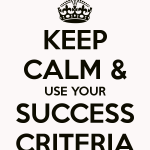As a project manager you often need organizational change management on your project. But should you try and do it yourself, with your current project resources, or should you hire an external consultant? As an external change management consultant myself, who gets hired onto projects, here is my perspective of when it makes sense to hire someone like me, and when you are better off trying to do it yourself.
 To begin with, here are some obvious downsides of hiring someone like me (yes, I am BIG enough to admit that I am not the solution to all of your problems ;o).
To begin with, here are some obvious downsides of hiring someone like me (yes, I am BIG enough to admit that I am not the solution to all of your problems ;o).
First, hiring an external consultant increases your budget. Secondly, you now have an external expert to manage, usually someone who is a bit more independently minded (Read: a bit harder to direct and control. Present company excluded, of course – all my friends tell me I am easy to work with). With the extra cost there is the additional risk that you “overbuy” – you either don’t have as much work for them as you anticipated, or you hire someone too senior. Whoopseys.
So you could be leaning to use in internal resource instead, someone already assigned to your project team (a sunk cost, as it were). The benefits are that they are less expensive, of course, and easier to direct. However, going with internal resources also carries certain risks.
Why not do it yourself?
Firstly, what if you underestimated the complexity and work required? Without someone who has some expertise this mistake is easier to make. If you underestimate how much work there is and how hard it’s going to be, you are going to be in a world of hurt during peak, high visibility periods (for example, as part of a key milestone). That’s really not good. The result could be many angry employees and executives, something that doesn’t help you build your PM brand.
Secondly, they may not be really suited to this ‘people stuff’. I have been on projects where the team member assigned to change management was a coder, a nd another time a junior process analyst. Nice people, but wrong talent set. One argued forcefully that we didn’t need training for a system to be used by doctors in the ER. This is Emergency Room doctors who would have to figure out how to use a new technology while trying to save someone from a heart attack. And they just couldn’t see why what they were saying was a problem. I am not making this up.
nd another time a junior process analyst. Nice people, but wrong talent set. One argued forcefully that we didn’t need training for a system to be used by doctors in the ER. This is Emergency Room doctors who would have to figure out how to use a new technology while trying to save someone from a heart attack. And they just couldn’t see why what they were saying was a problem. I am not making this up.
Thirdly, even if they have the right instincts but not enough experience, you could end up with a highly stressed and overworked team member or two. And, this means they’ll make mistakes (that’s how sometimes I learned!) This means that you personally will have to spend time an energy responding to disgruntled stakeholders and mollify unhappy sponsors. That’s exactly why you signed up to be a PM, right?
Guidelines you can use
To be sure it is not an easy and straight-forward decision, but there are guidelines you can use. I often talk to PMs about their change management needs, and the first thing I try to determine is whether their project is really an opportunity for me, or whether they would be better off trying to do it themselves.
I ask the PMs a series of questions, and based on their responses I can get a sense which direction is best for them. Here are some signs that you may be able to manage the change yourself:
-
Your enterprise transformation project impacts a company with fewer than 200-250 people
-
You are impacting only 1 department in your organisation (even if it is a larger corporation)
-
The employees work out of one location
-
The project will not create significant change – people are not likely to have to relearn their jobs, change how they’re evaluated, or lose their jobs
-
People in your organisation tolerate change well and are used to it
-
Your project is similar to another one that was implemented successfully in the past
If all or most of these are true, then you are very likely fine trying to do it yourself. If not, it may mean you could still do it, but it may be wise to check in with an experienced consultant you trust to avoid any pitfalls. An initial assessment like this would take usually 30-60 minutes, and is often free since it’s part of a consultant’s business development activities. For the cost of a lunch you can save yourself a lot of uncertainty, cost and potentially grief.
Making sure your team has what it takes
If you do decide to do it yourself, you still need to stack the deck in your favour. You need to make sure that your team member has necessary profile to implement change management successfully. In this case, an individual’s innate character traits or personality is more important than change management skill s and knowledge.
You can validate this with two simple questions. These are the two I always check for when recruiting for a change management resource, and you only need these two. These have never failed me. Does your potential change management resource…
- …get why it’s important to make sure people are on board with the proposed changes? Simply put, you can’t “do” feelings. Your change management candidate actually has to care about people and how they feel. Cut the meeting short and stop wasting your time if the person doesn’t really care who’s on board and who isn’t, or doesn’t get what the fuss is all about. If they want to sound tough and believe that people should just “get on with it” they are wrong for this role. Your sponsor can be that tough, you can be that tough, but your change lead cannot be.
- …show passion for wanting to inform and engage people? They will have a tough job. They will need to push back against you, and sometimes the sponsor, at times. Unless they have a touch of the evangelist in them, they will just cave and let you do whatever you want, right or wrong. Then, what’s their purpose? If they can’t stand up a bit to you they’re of no use to you. They will need some of that courage that comes from passion.
One Final Caveat
Perhaps you are tempted to do this yourself rather than have a team member take on this role. And maybe you can, but here my warning to you based on years of experience.
Whenever I managed a project as a PM, I have had to eventually give responsibility for change management to someone else. Frankly, I found it hard to balance the two kinds of mindset required.
As PM I was focused on task efficiency, following up on people to meet timelines and stay within budgets. As change manager or lead I had to be focused on effectively engaging stakeholders. This meant taking extra time to listen to them and collaboratively formulating the best solutions or messages.
It’s hard to be in one mindset one moment, trying to rush tasks to completion and pushing people, and then flip to a mindset where you need patience and active listening. Other project managers have had the same experience and found it too disruptive to flip back and forth.
That’s it, you should be all set. Good luck!
Let us know what you think – Contact us!
Like this blog? Share it with your colleagues. And sign up so you won’t miss another one!












